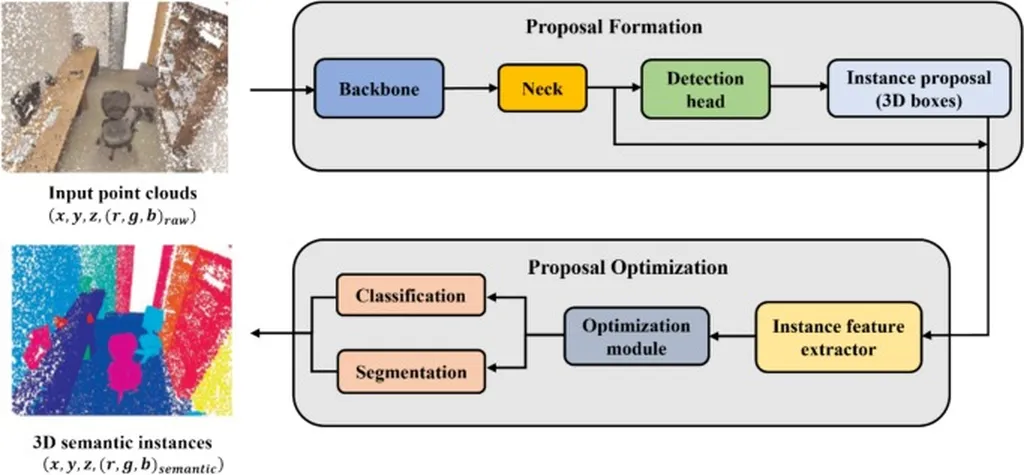In the rapidly evolving world of construction technology, a groundbreaking study led by G. Z. Tsige from the Earth Observation Science Department at the University of Twente is set to revolutionize how we monitor construction progress. The research, published in ‘The International Archives of the Photogrammetry, Remote Sensing and Spatial Information Sciences’ (translated as ‘International Archives of Photogrammetry, Remote Sensing and Spatial Information Sciences’), introduces an automated method for aligning 3D Building Information Models (BIM) with as-built point clouds, a critical task for tracking construction progress.
The challenge has always been the self-similarity and symmetry in building designs, which makes it difficult to extract distinct geometric features for accurate registration. Tsige’s method, however, leverages the power of deep learning and the Random Sample Consensus (RANSAC) algorithm to extract and match columns from both the as-built point cloud and the as-planned BIM model. “Our approach automates the registration process, significantly improving accuracy and efficiency,” Tsige explains.
The implications for the construction industry are profound. Accurate construction progress monitoring is crucial for project management, cost control, and quality assurance. With this new method, construction companies can expect to reduce errors, save time, and ultimately, cut costs. The energy sector, in particular, stands to benefit from this technology. As buildings become more energy-efficient and complex, the need for precise construction monitoring becomes even more critical.
The study’s results are impressive, with an RMSE of 2 centimeters and a cloud-to-cloud mean distance of 1.6cm ± 1.8cm after fine registration. These figures demonstrate the potential of this method to become an industry standard. As Tsige puts it, “Our proposed approach contributes to automating the registration between the as-built point cloud and the as-planned BIM model for construction progress monitoring.”
This research is not just a step forward; it’s a leap towards a future where construction progress monitoring is automated, accurate, and efficient. It’s a testament to the power of deep learning and advanced algorithms in transforming traditional industries. As we look to the future, it’s clear that technologies like these will play a pivotal role in shaping the construction landscape.

